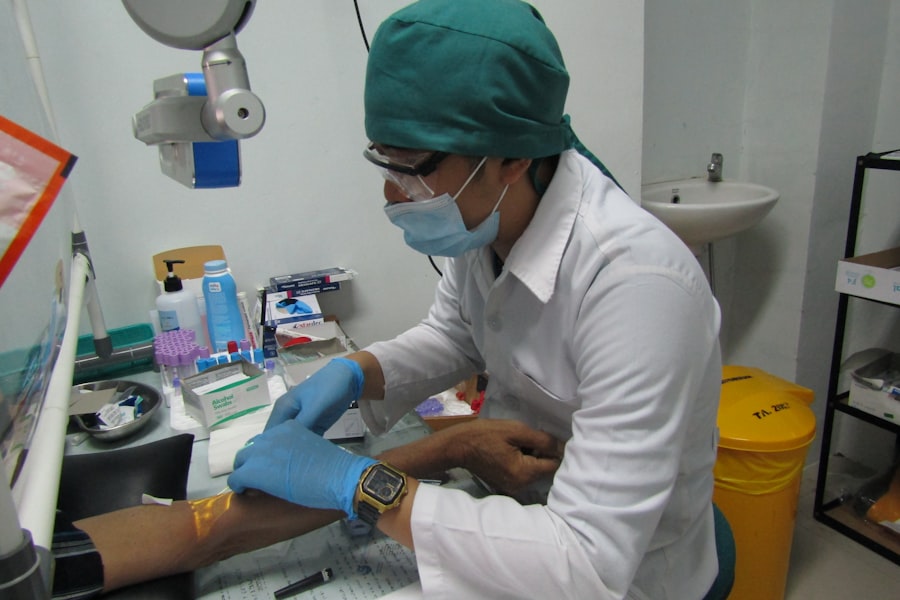Clinical Trial Management Systems (CTMS) have emerged as indispensable tools in the realm of clinical research, serving as comprehensive software solutions designed to streamline the planning, tracking, and management of clinical trials. These systems facilitate the organization of trial data, enhance operational efficiency, and ensure compliance with regulatory requirements. As the complexity of clinical trials continues to grow, driven by factors such as increased patient enrollment, multi-site studies, and stringent regulatory scrutiny, the need for robust management systems has never been more critical.
CTMS not only aids in managing the logistical aspects of trials but also plays a pivotal role in ensuring that data integrity and patient safety are maintained throughout the research process. The evolution of CTMS can be traced back to the early days of clinical research when data was often managed manually, leading to inefficiencies and increased risk of errors. Today, CTMS solutions have evolved into sophisticated platforms that integrate various functionalities, including project management, budgeting, and regulatory compliance.
By centralizing data and automating processes, CTMS enables research teams to focus on what truly matters: conducting high-quality research that can lead to new therapies and improved patient outcomes. The integration of technology into clinical trial management has transformed how trials are conducted, making it essential for organizations to adopt these systems to remain competitive in the fast-paced world of clinical research.
Key Takeaways
- CTMS centralizes and streamlines clinical trial management, improving efficiency and oversight.
- Key features include data tracking, scheduling, budgeting, and regulatory compliance support.
- Integration with EDC systems enhances data accuracy and simplifies analysis.
- CTMS fosters better collaboration and communication among all trial stakeholders.
- Successful CTMS implementation requires adherence to best practices and thorough user training.
Benefits of Implementing CTMS in Clinical Trials
The implementation of a Clinical Trial Management System offers numerous benefits that can significantly enhance the efficiency and effectiveness of clinical trials. One of the primary advantages is the ability to centralize data management. By consolidating all trial-related information into a single platform, researchers can easily access and share data across different teams and stakeholders.
This centralization reduces the risk of data silos, where information is isolated within specific departments or sites, leading to inconsistencies and delays in decision-making. With a CTMS, all stakeholders—from clinical research associates to principal investigators—can work from the same dataset, ensuring that everyone is aligned and informed. Another critical benefit of CTMS is its ability to improve operational efficiency.
Traditional methods of managing clinical trials often involve cumbersome paperwork and manual processes that can be time-consuming and prone to human error. CTMS automates many of these processes, such as patient recruitment tracking, site management, and regulatory submissions. For instance, automated reminders for site visits or patient follow-ups can help ensure that timelines are met without the need for constant manual oversight.
This not only saves time but also allows research teams to allocate their resources more effectively, focusing on strategic tasks rather than administrative burdens.
Key Features and Functionality of CTMS

A well-designed Clinical Trial Management System encompasses a variety of features that cater to the diverse needs of clinical research organizations. One of the most essential functionalities is project management, which allows users to plan, execute, and monitor trial activities in real-time. This includes tracking milestones, managing budgets, and overseeing timelines.
With project management tools integrated into a CTMS, teams can visualize their progress through dashboards and reports, enabling them to identify potential bottlenecks early on and take corrective actions as needed. In addition to project management capabilities, CTMS often includes modules for site management and patient recruitment. These features facilitate the identification and selection of suitable trial sites based on specific criteria such as patient demographics and site performance history.
Furthermore, CTMS can streamline the recruitment process by providing tools for tracking patient eligibility and enrollment status. This functionality is particularly crucial in multi-site trials where coordination among various locations can be challenging. By leveraging these features, organizations can enhance their ability to recruit participants efficiently while maintaining compliance with ethical standards.
Streamlining Data Collection and Analysis with CTMS
| Metric | Description | Before CTMS Implementation | After CTMS Implementation | Improvement |
|---|---|---|---|---|
| Data Entry Time | Average time to enter clinical trial data (minutes per entry) | 15 | 5 | 67% Reduction |
| Data Accuracy | Percentage of data entries without errors | 85% | 98% | 13% Increase |
| Data Retrieval Time | Time to retrieve specific trial data (hours) | 24 | 2 | 92% Reduction |
| Report Generation Time | Time to generate analysis reports (hours) | 48 | 6 | 87.5% Reduction |
| Number of Manual Errors | Errors detected during data review per 1000 entries | 50 | 5 | 90% Reduction |
| Trial Monitoring Efficiency | Percentage improvement in monitoring tasks completion on time | 70% | 95% | 25% Increase |
Data collection is a cornerstone of clinical trials, and a CTMS plays a vital role in streamlining this process. Traditionally, data collection involved multiple steps, including manual entry into spreadsheets or databases, which could lead to errors and inconsistencies. A CTMS automates data capture through electronic forms and integrated workflows that ensure data is collected uniformly across all sites.
This not only enhances data accuracy but also accelerates the overall data collection process. Moreover, the analytical capabilities of a CTMS allow researchers to derive insights from collected data more effectively. Advanced reporting tools enable users to generate real-time reports on key performance indicators (KPIs), such as patient enrollment rates or adverse event occurrences.
By having access to up-to-date analytics, clinical trial managers can make informed decisions quickly, adjusting strategies as necessary to optimize trial performance. For example, if a particular site is lagging in patient recruitment, managers can investigate potential issues and implement targeted interventions to improve enrollment rates.
Improving Regulatory Compliance and Reporting with CTMS
Regulatory compliance is a critical aspect of clinical trials, as organizations must adhere to stringent guidelines set forth by regulatory bodies such as the FDA or EMA CTMS enhances compliance by providing built-in tools for tracking regulatory submissions and approvals. This includes managing essential documents such as informed consent forms, ethics committee approvals, and safety reports. By automating these processes, a CTMS reduces the risk of missing deadlines or failing to submit required documentation.
Additionally, CTMS facilitates audit readiness by maintaining comprehensive records of all trial activities. This includes tracking changes made to study protocols or participant data over time. In the event of an audit or inspection by regulatory authorities, having a well-documented trail of compliance activities can significantly ease the process.
For instance, if an investigator needs to demonstrate adherence to Good Clinical Practice (GCP) guidelines during an audit, a CTMS can provide instant access to relevant documentation and evidence of compliance efforts.
Enhancing Collaboration and Communication among Clinical Trial Stakeholders

Effective collaboration among stakeholders is essential for the success of any clinical trial. A CTMS fosters this collaboration by providing a centralized platform where all parties—researchers, sponsors, site staff, and regulatory bodies—can communicate seamlessly. Features such as shared calendars, task assignments, and messaging systems enable real-time communication and coordination among team members.
This is particularly beneficial in multi-site trials where teams may be geographically dispersed. Moreover, a CTMS enhances transparency by allowing stakeholders to access relevant information at any time. For example, sponsors can monitor trial progress through dashboards that display key metrics such as enrollment status or site performance.
This level of visibility not only builds trust among stakeholders but also encourages proactive engagement in addressing challenges that may arise during the trial process. By fostering an environment of open communication and collaboration, a CTMS contributes to more efficient trial execution and improved outcomes.
Integrating CTMS with Electronic Data Capture (EDC) Systems
The integration of Clinical Trial Management Systems with Electronic Data Capture (EDC) systems represents a significant advancement in clinical trial technology. EDC systems are designed specifically for collecting clinical trial data electronically at the site level, while CTMS focuses on overall trial management. When these two systems are integrated, organizations can achieve a seamless flow of information between data collection and trial management processes.
This integration allows for real-time data synchronization between EDC and CTMS platforms. For instance, when patient data is entered into an EDC system during a site visit, it can automatically update relevant fields in the CTMS without requiring manual entry. This not only reduces the risk of errors associated with duplicate data entry but also ensures that trial managers have access to the most current information for decision-making purposes.
Furthermore, integrated systems can enhance monitoring capabilities by providing alerts for discrepancies or missing data points that require attention.
Best Practices for Successful Implementation and Utilization of CTMS
Implementing a Clinical Trial Management System requires careful planning and execution to ensure its success within an organization. One best practice is to involve key stakeholders from various departments early in the selection process. By gathering input from clinical operations, data management, regulatory affairs, and IT teams, organizations can choose a CTMS that meets their specific needs while fostering buy-in from all parties involved.
Training is another critical component of successful implementation. Providing comprehensive training sessions for users ensures that they are familiar with the system’s functionalities and can utilize it effectively in their daily tasks. Ongoing support should also be established to address any questions or challenges that may arise post-implementation.
Additionally, organizations should regularly review their use of the CTMS to identify areas for improvement or optimization based on user feedback and evolving industry standards. In conclusion, Clinical Trial Management Systems represent a transformative force in clinical research by enhancing efficiency, compliance, collaboration, and data integrity throughout the trial lifecycle. As organizations continue to navigate the complexities of modern clinical trials, adopting best practices for implementation will be crucial in maximizing the benefits offered by these powerful tools.




